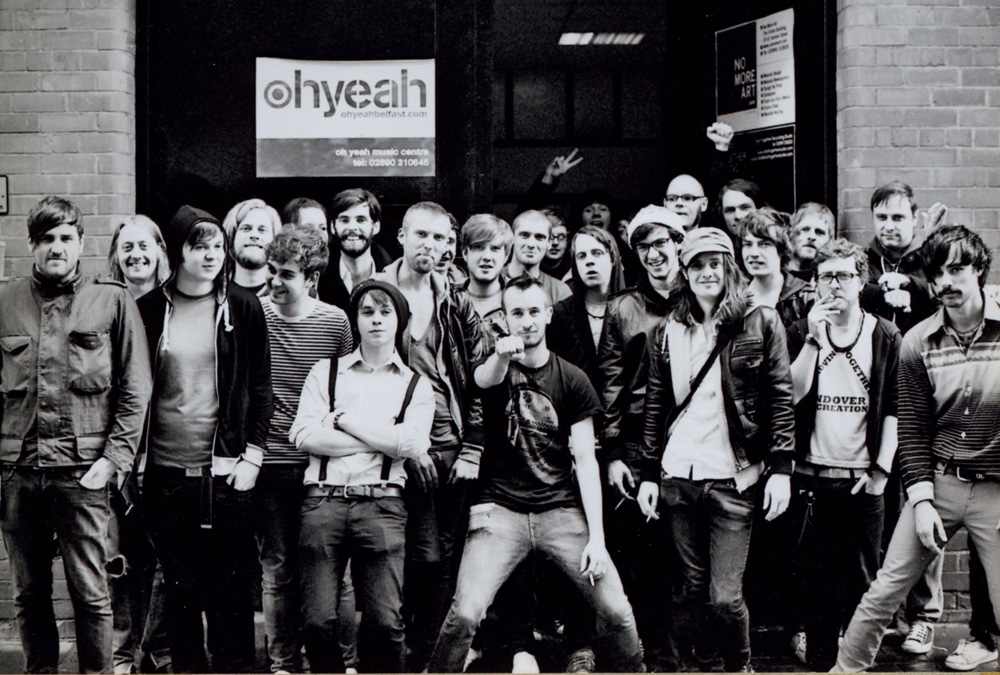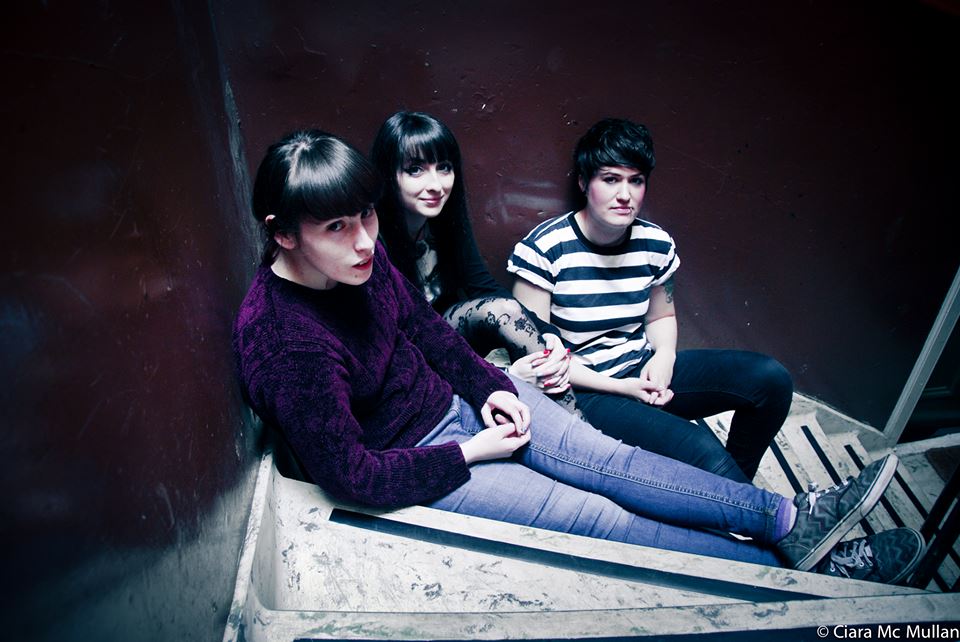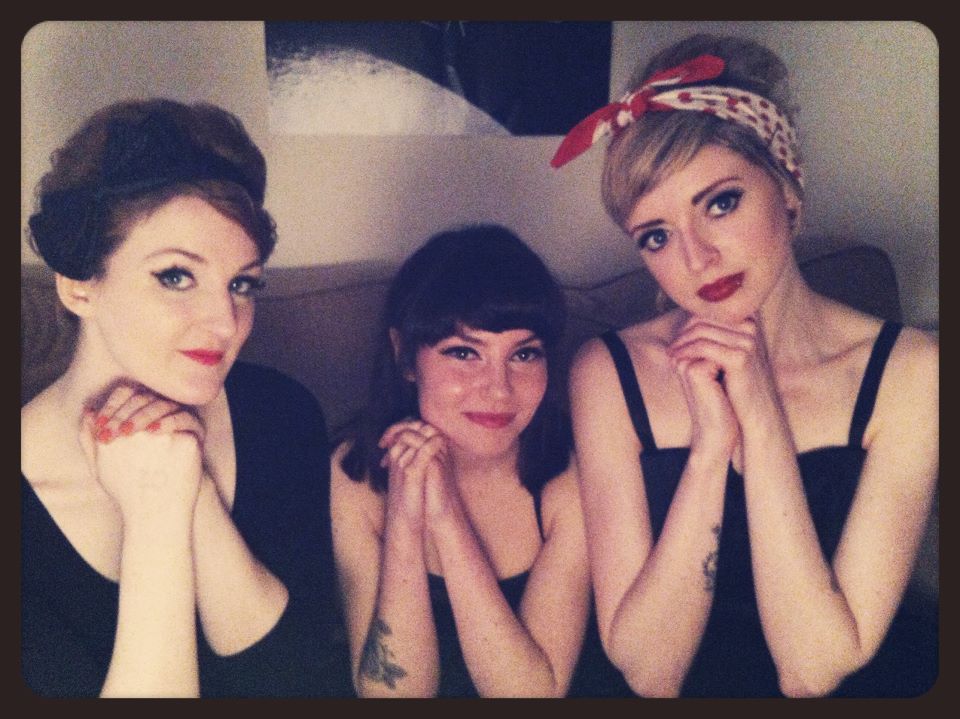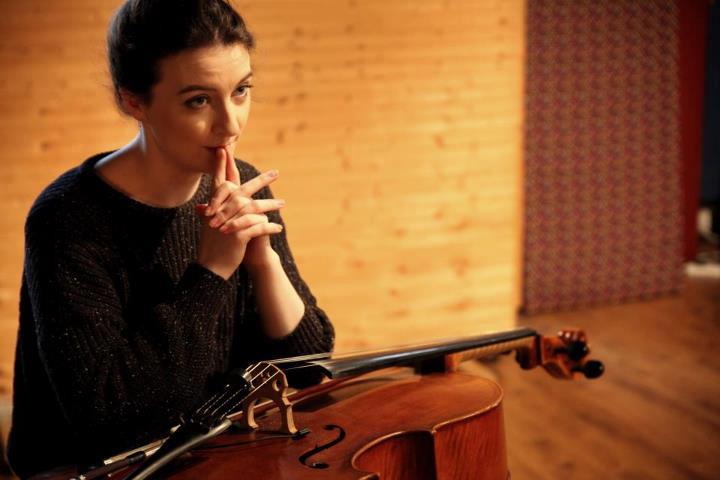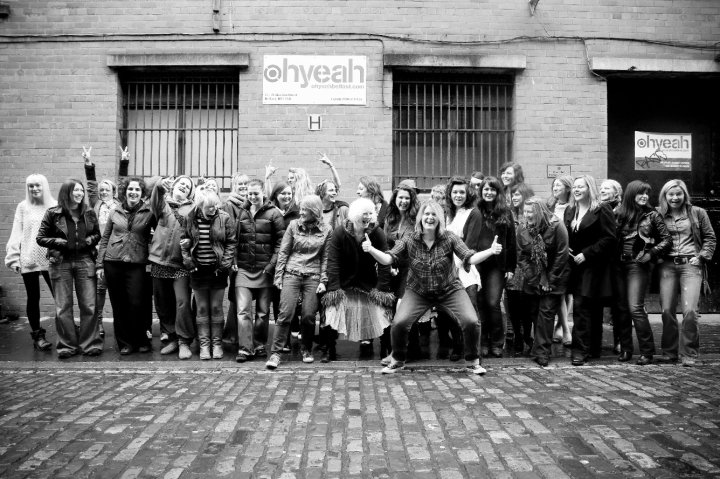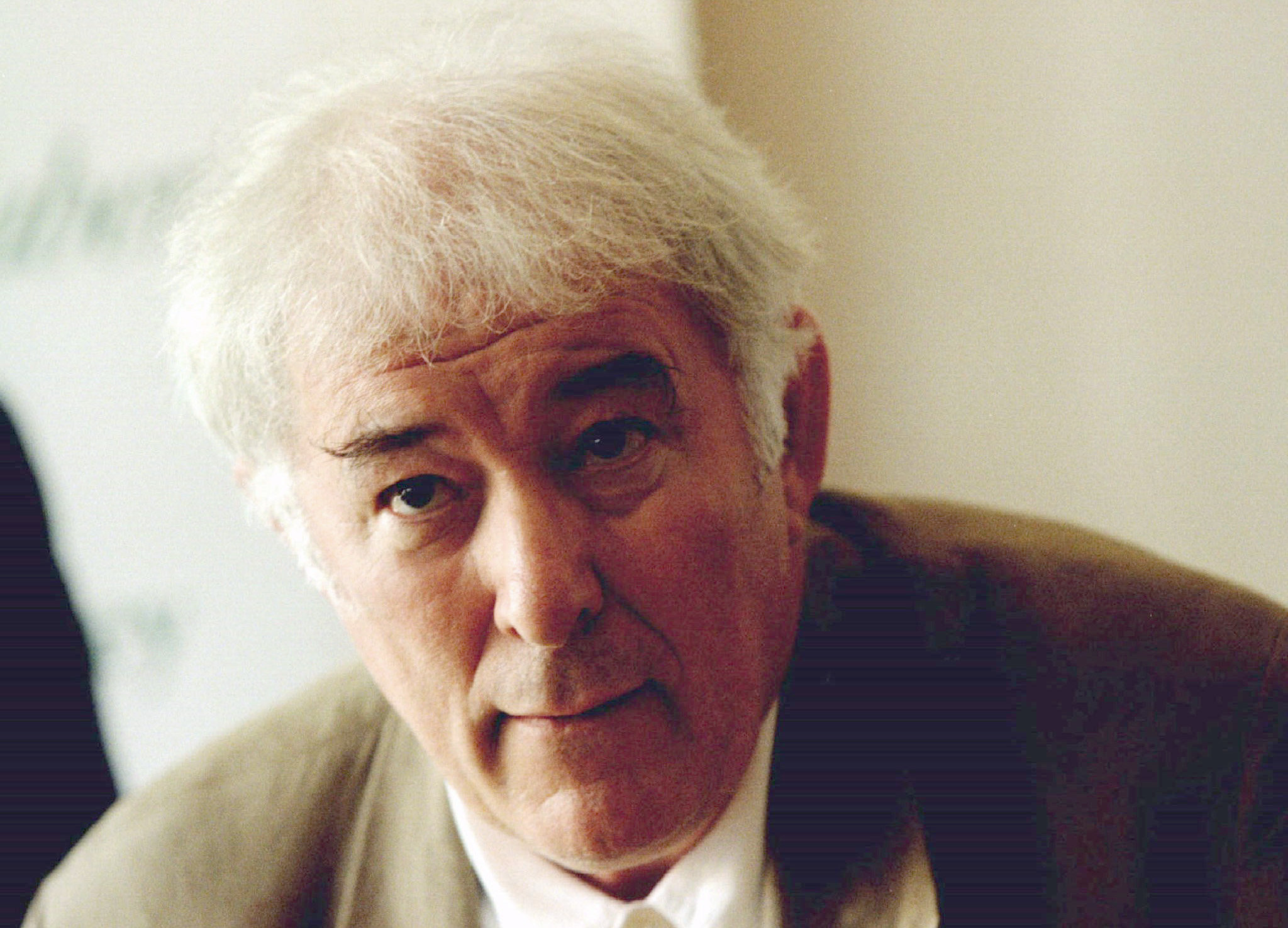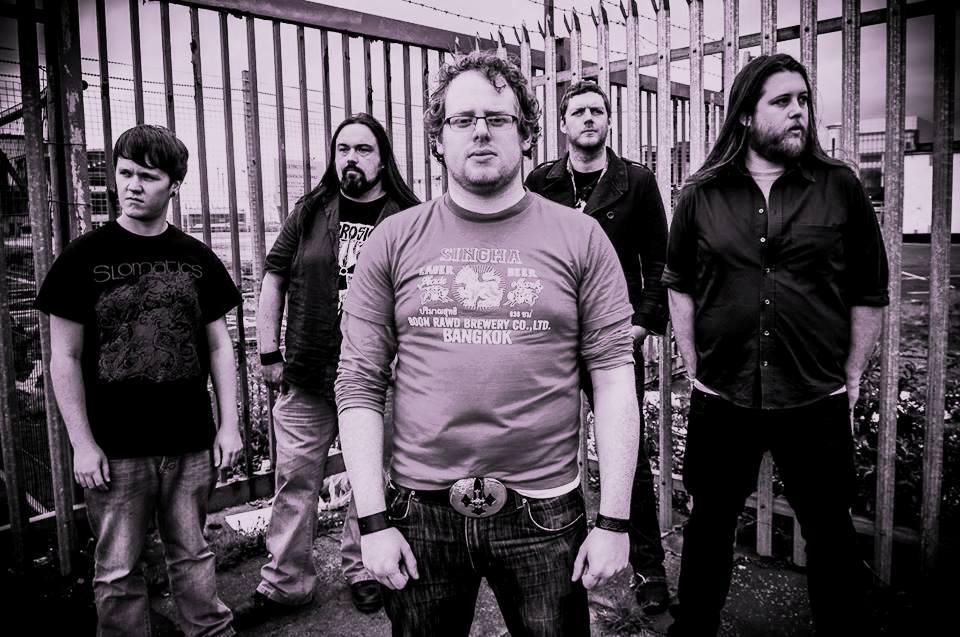“Recently I had a sound engineer explain to me how to use a microphone. He told me he didn’t know how the girls on TV did it, but it wasn’t ‘the way they do it in the real world.’” Katie Richardson, Katie and the Carnival.
I’ve been aware of a quiet phenomenon in the Belfast music scene for years, but it wasn’t until recently that the full picture was revealed to me. In my day job, I do PR and artist development for several local musicians. We were building a band around one of the artists and required a new band member. They had to meet these simple requirements: to play drums OR guitar, be able to sing, and be aged in their early twenties. Sounds pretty achievable, right? Well, it would be, until you realise that we wanted the new band member to be female. We set off with high hopes, searching YouTube channels, open mic nights and music pages. The yield was poor. We started to panic. We asked everyone. When we eventually found two musicians who seemed excellent for the band, it turned out that both were leaving the country. The fact of the matter couldn’t be ignored anymore – there simply aren’t enough female “rock” musicians.
If you don’t agree with me, it only takes a glance at this summer’s Northern Irish festival line-ups to see it. Stendhal had fifty acts over the weekend, nineteen contained females. Of these, there was one “all female” band (Vanilla Gloom, below) and three solo performers. Forfey: thirty acts, nine with female performers, including five playing solo or fronting a band. Of the fifty main acts that performed at Glasgowbury, it’s twelve bands down the list from headliners The Answer before a band containing a female can be counted – with the tally adding up to approximately sixteen acts. Need I go on? This isn’t a jibe at the festival curators, far from it. It merely serves to illustrate the uneven ratio between male and female musicians in Northern Ireland. 2:1 isn’t very good innings.
Slightly baffled – and quite frankly concerned – by the apparent drought, I approached a range of musicians and professionals in the local music industry to ask what they thought about the gender imbalance in local music.
What better place to start than at the root of any cultural and social standard – education. For Shannon O’Neill (one third of Vanilla Gloom) the idea of playing a non-classical instrument was frowned upon in school: “Our style was assumed less credible than those singing classical registers or playing in string quartets… the drummer in my class was the first drummer that took Music GCSE and the school didn’t even have a drumkit.”
Rory Nellis, a performer and guitar teacher in several schools, reveals that around 80% of his students are male: “for girls and women, playing the guitar, bass or drums is still an ‘alternative’ choice. I have no idea why.” Perhaps the problem lies in the separation between “pop” and classical music education. To some extent, the syllabus has a long way to go to catch up with modern tastes. While it’s important to teach the rudiments of music theory, there’s a whole side of the industry based on live performance, improvisation and collaboration which is only beginning to be addressed in schools. The classical world appears to have a more equal balance in the genders, so why not in rock music?
Niamh Hegarty, DJ, musician in the band Hunk (above), and music journalist, makes a valid point. “Classical performance tends to be something taken up at a young age – you learn to mix. It’s genderless. It’s all about who plays what and at what calibre.” Rory suggests another less appealing but plausible reason: “classical music has a nice respectable image, befitting a young ‘lady’. I know that sounds a bit mad, but I do think that it might be a hangover from a time when that was true.” Rachel Austin (below) singer, songwriter and vocal coach, agrees. “It’s easier to be seen as strong and feminine when you’re in theatre, rather than in rock where you may be open-your-legs strong. The culture of rock doesn’t agree with the culture where females are meant to be nice and agreeable.”
Culture and the media certainly have a role to play in the way female musicians are appraised. Pressure about image and age is undoubtedly felt by both sexes, but perhaps the weight lies more heavily on females. Many are put off before they even try. Katie Richardson, AKA Katie and the Carnival, agrees. “There is this idea of men improving with age and women deteriorating – it’s a very negative idea that the media place on women.” She admits to having concerns about her age and appearance, and their effect on her success. “Since I turned 25 I have been terrified that my career might be over before it has even begun… I have always felt that my appearance might hold me back in the industry, and this lack of confidence has definitely affected how I have approached my career in the past few years. I know that I wouldn’t care if it wasn’t for the industry I work in.” It’s all too easy to forget that the pristine pop ladies that dominate the charts have an army of stylists behind them.
Carrie Davenport, a professional music photographer, knows firsthand how the media can view an artist. “Being up on stage, you have to have a persona and put on a show… pressure to be good looking sometimes outweighs the musical talent and that’s a real shame.” She recognises the insecurities any artist can feel under the spotlight: “if you are talented it should be about the music. As a photographer I’m always trying to make people look their best regardless of their shape or size – it’s my job.” It’s a double edged sword in many ways, as Katie reveals. “I think when I rock up with my glittery eye makeup and pink guitar people make certain assumptions about me. I sometimes try and tone it down but it’s difficult to turn off who you are.”
Charlene Hegarty, publishing director of Smalltown America Music, puts it succinctly: “the media often find more ammunition on women – be it their hair, make-up or latest ill fitting outfit. The sad fact is that most media writers who dwell on this body image ideal are also women. They do very little to further the sisterhood. I can confirm to do a good job in the music industry you need only talent and guts.”
This isn’t the only challenge that females face in a male dominated environment. Some have found it difficult to make their voice heard – sometimes literally. “It can be intimidating to walk into a room as the only one of anything – whether it’s as a woman, a gay man, or a foreigner” says Rachel. “Put that into a work context dominated by men and – yeah – you have to absolutely love what you do heart and soul to be able to deal with that. I think that puts a lot of women off.” She adds, “in music you have groups of men working together and behaving as though there are no women around… What usually happens is that I’m flat out ignored. I’ve had sound techs talk to another member of a band about my tech setup right in front of me!” Katie (below), too, has had difficulties onstage and in the studio when it comes to getting her voice heard. “The engineer would often ask the guys what they thought instead of me, even though I was paying [for the recording]. I would almost be laughed at for my suggestions, or if I became passionate or annoyed about something I’d be called ‘emotional’. I made the mistake of giving in and then having to redo whole recordings because I didn’t stick to my guns.”
Gender preconceptions of women being delicate and weak have also reared their ugly head. Rachel has been referred to as a “wee girl”, whilst Vanilla Gloom have received such inappropriate comments as “girls can’t play drums” or “Girls?! In a band!? Girls who play instruments!?”. “Why do people even bother bringing up the supposed elephant in the room?” Shannon remarks. “That elephant should be long dead by now.” Katie’s performance on the main stage at Glasgowbury last year was a career highlight, yet one reviewer simply described it as “cute.” “If it had been guys in the band I wonder if he would have used the same word.”
It goes without saying that music is genderless, but we’re still a long way off from “girl bands” not being an acceptable phrase, or being made into a “thing”. If you went to a gig tonight and the line-up had bands with only women in them, it would feel like a novelty. If it was the other way around (as is usually the case), you wouldn’t bat an eyelid – this writer included. Theme nights with all female musicians may mean well, but all they really do is perpetuate a notion of women being apart from the main music scene. Katie doesn’t see the need for such a division; “these promoters are very often women trying to highlight female talent locally which is admirable, but I personally don’t find it necessary to do it in that way. I have NEVER been to a night called ‘Boys with Basses’ or ‘Dudes with Distortion.’”
The tide seems to be turning, though. Northern Ireland always appears to be a step behind the rest of the UK in trends, but over there, there is a garnering of women in rock. Shannon cites Savages, PINS, Honeyblood and Blood Indians as examples of emerging successful all-female acts from outside N.I. Charlene acknowledges an evolution in the industry: “women are, across all areas of industry, taking on roles which were historically set aside for men. There are opportunities developing through progress in education and social shifts.” We have many strong female performers in bands and solo acts here ourselves – Silhouette, Wonder Villains, Wyldling, Alana Henderson (above) and Runaway Go to name a few. Yet there’s no denying that this roster can stand to be added to. Moving forward, the shift must come both sexes, and all areas of the music scene, as Niamh recognises; “Stop viewing it as a male orientated industry and just get out there and strike a balance. To get to the point where your gender doesn’t come into it, where you’re just considered a good musician. That’s what I aim for anyway.” Grace Loughrey

